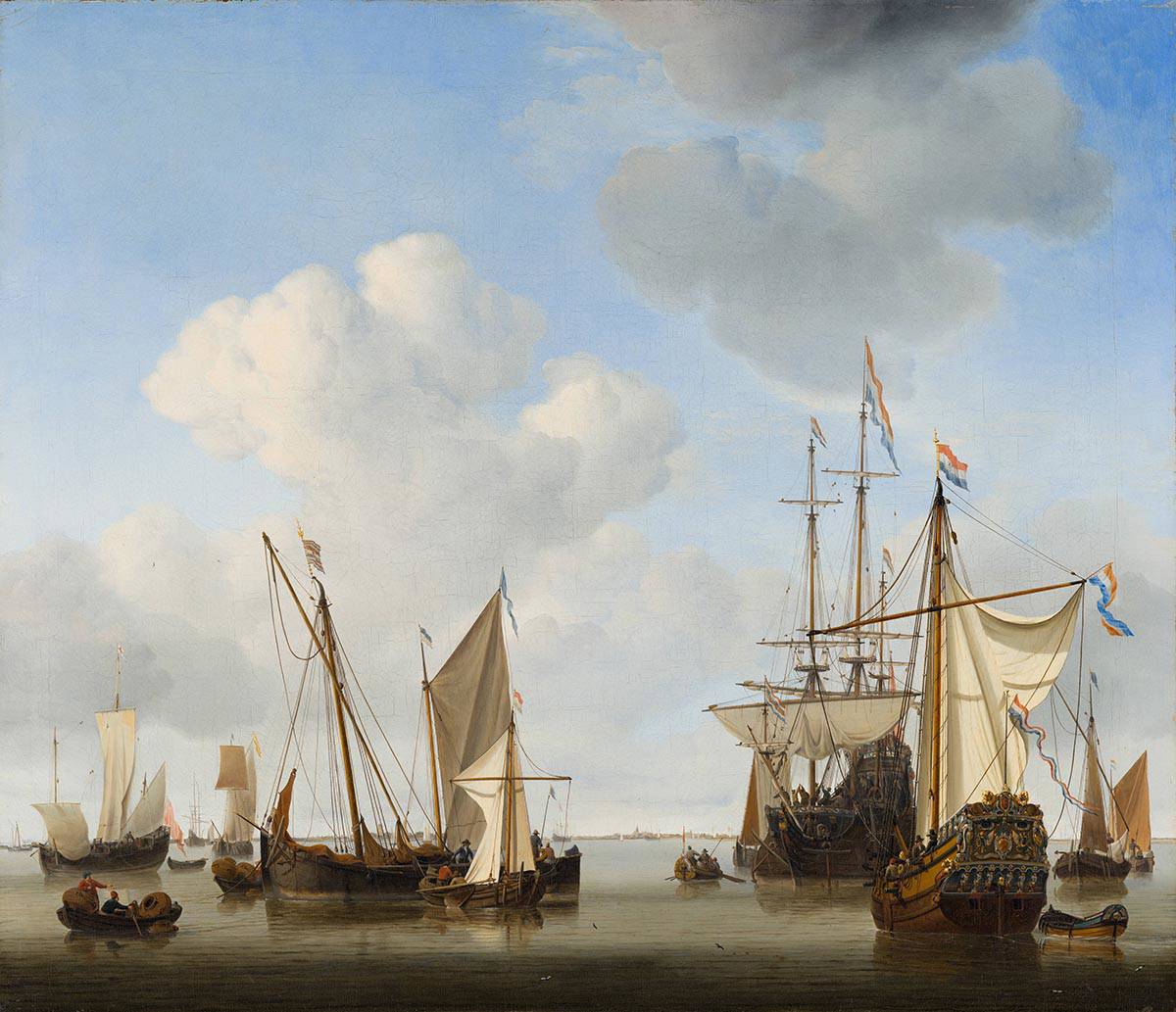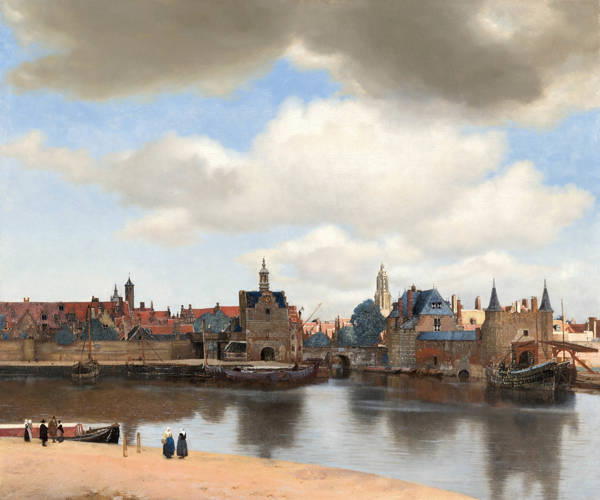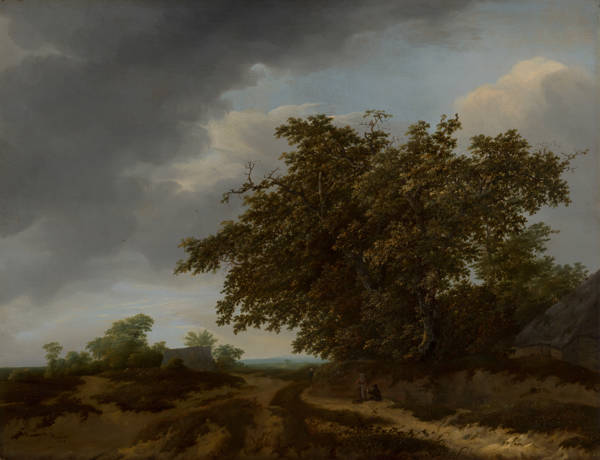Landscapes
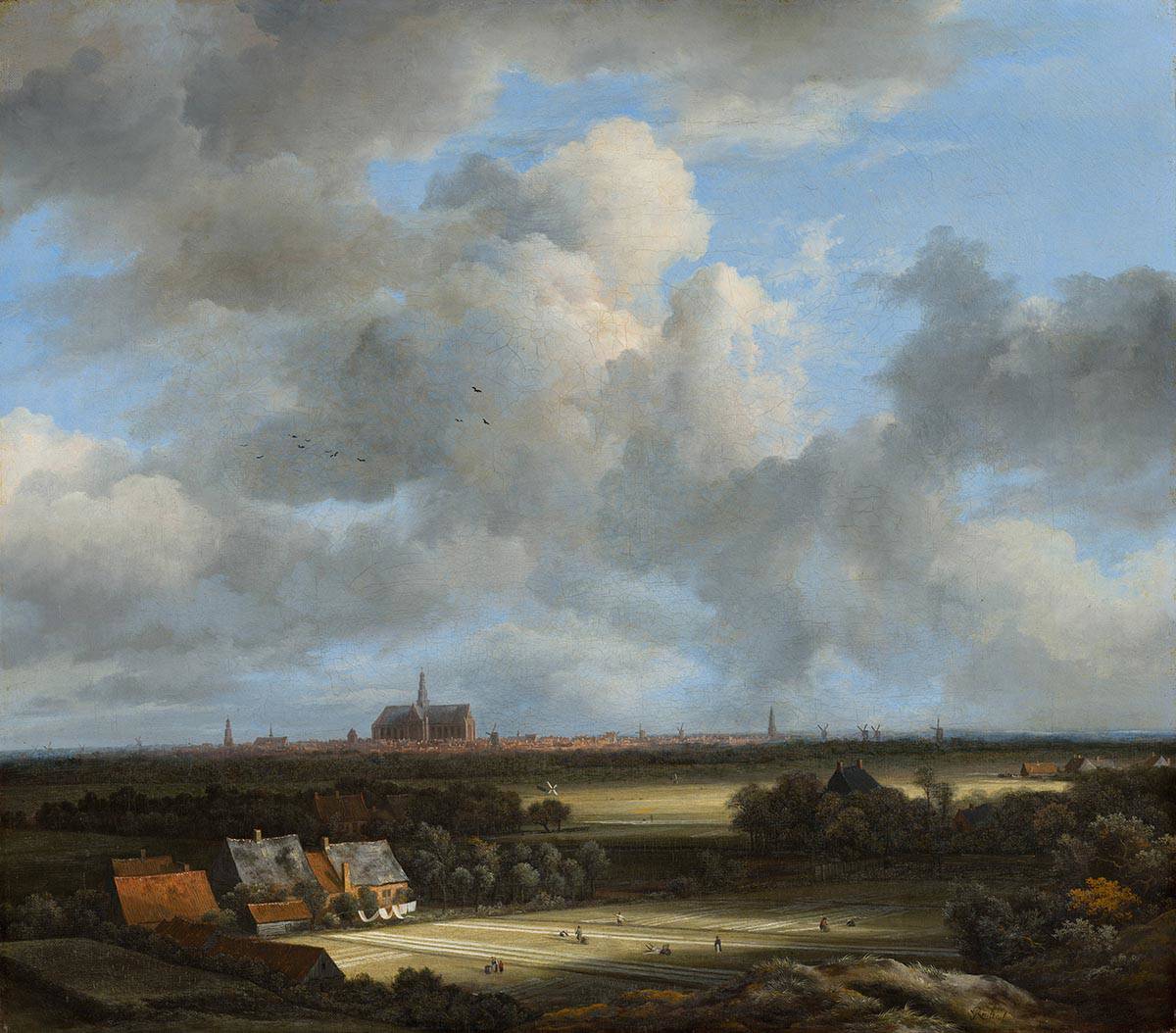
The Netherlands has no mountain ranges or dramatic countryside, yet in the 17th century, the Dutch landscape became a favourite subject for painters. They painted dunes, rivers, windmills and farms, all as realistically as possible, as though you could step right into the landscape. The paintings show the natural world as people experienced it at the time: as a special, divine place of tranquillity, power, and sometimes menace.
Landscape painters in the 17th century
Renowned landscape painters were Jacob van Ruisdael, Salomon van Ruysdael, Jan van Goyen and Jan Vermeer of Haarlem. They created carefully composed scenes, showing the landscape to its best advantage. The horizon was usually low, so that most of the painting was dominated by sky. Hence, clouds and light were very important. And these skies are instantly recognisable: quintessentially Dutch.
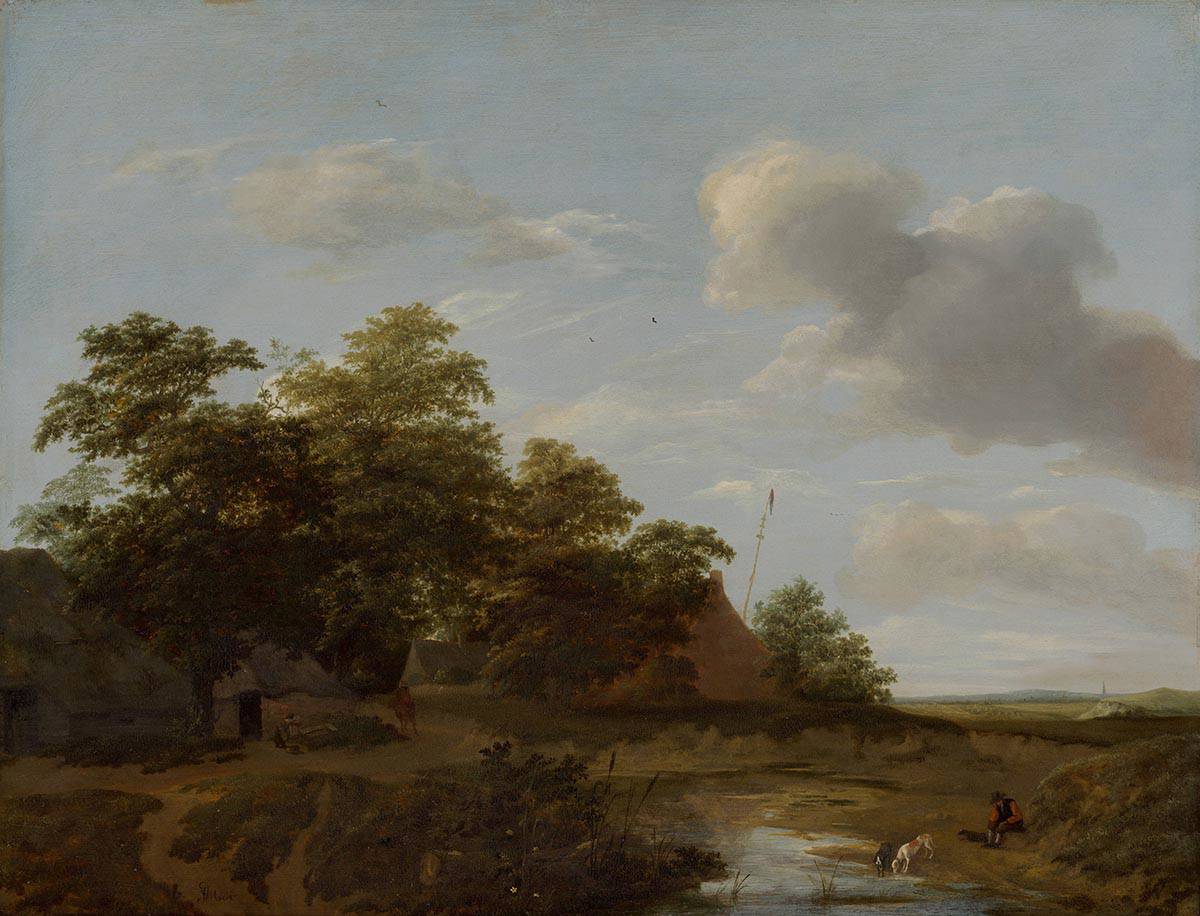
Stories in landscape paintings
Landscape paintings aren’t just impressive, they also tell stories. Dark clouds can represent danger or change. An ancient oak tree can stand for steadfastness. Sometimes painters invented parts of the landscape to make it more beautiful, dreamlike or dramatic. Or they deliberately left out things they thought didn’t fit in. Take, for example, the work of Salomon van Ruysdael, River Landscape with Church and Ferry. This landscape springs partly from the artist’s imagination – the church and the small castle are probably his invention.
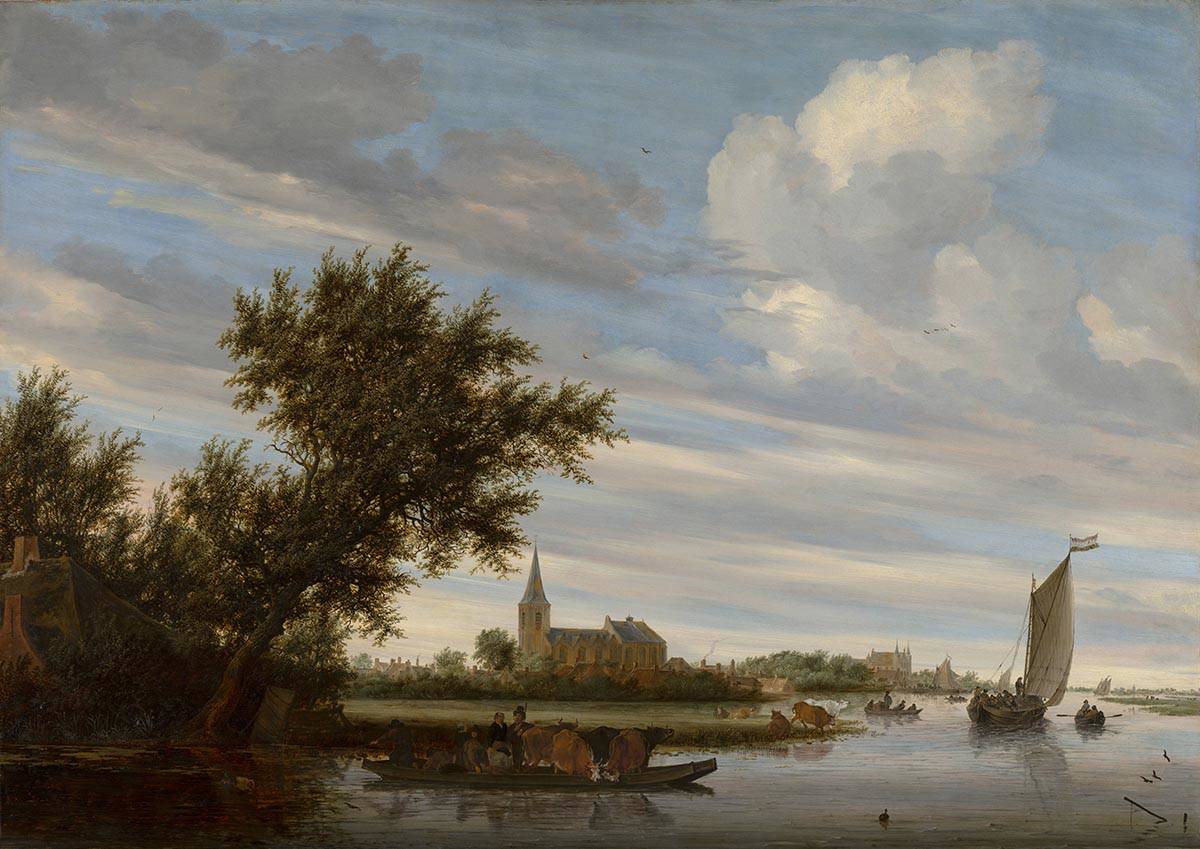
Seascapes
Due to the many sea voyages the Dutch made in the 17th century, the sea was a much-loved theme. You’ll discover more about this particular kind of landscape painting under seascapes.
